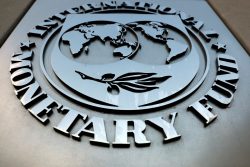So far Parts 1 & 2 of this four-part series of columns have argued that the proximate or immediately precipitating factor driving the multifaceted crises which have emerged in Guyana today, stems from the unprecedented torrent of financial lawlessness, abuses and irregularities unleashed by the minority PPP/C executive, which came into office following the November 2011 national elections. Evidence in support of this contention has been presented and further I have already listed the ten most egregious of these abuses. This was then followed by the argument that prorogation of the National Assembly signals a marked worsening of authoritarianism in the Guyana state, so severe as to take it beyond my earlier categorization of the state as principally a vehicle for the pursuit of criminal endeavours by those in control.
At that point I introduced three postulates to support this contention; namely, 1) the illegality/unconstitutionality of the Presidential prorogation; 2) the subversive and terroristic implications arising from the Nandlall taped conversation with Kaieteur News (KN); 3) the prorogation (and consequent closure of the National Assembly) substantially enlarges the opportunities for executive financial abuses. These postulates framed my main proposition that two changes for the worse have been set in train namely, 1) the incorporation of state terrorism into the political armoury of the ruling PPP/C; and 2) the fire sale of Guyana’s national resources in order to expand the public resources made available through the PPP/C for private plunder.
Today’s column focuses on these two changes for the worse, which take the Guyana state beyond my earlier characterization of it as a vehicle for promoting criminal endeavours.
State terrorism
 The second of the three postulates repeated above is perhaps the most contentious. Beyond its crassness, pomposity, misplaced vanity, immorality, indecency and
The second of the three postulates repeated above is perhaps the most contentious. Beyond its crassness, pomposity, misplaced vanity, immorality, indecency and
vulgarity, which many have stressed, I believe above all the taped conversation reveals the AG (of all the cabinet members of the PPP/C executive) embracing language, which indicates the possibility of terroristic acts against KN and persons associated with it, with the clear political objective of curtailing criticisms of the ruling PPP/C administration.
While the notion of state terrorism remains hotly disputed in the legal and political literature, it is my considered belief that the AG’s invocation of extra-judicial sanction and violence, and his perceived intimidation through use of a state agency (Guyana Revenue Authority, GRA) against critics of the government and their businesses constitute acts of state terror. This is so for four reasons:
a) If individuals and or non-state organizations were to do the same, there would be no hesitation on the part of the authorities anywhere that the rule of law prevails in investigating/apprehending the instigators for involvement in terroristic activities.
b) The legal office Mr Nandlall holds (AG) must also be considered in gauging how serious is the threat of violence and the generation of fear that was sought for a political outcome from among the KN owners, staff, readers, other stakeholders, and indeed all Guyanese citizens
c) The KN was the victim of an earlier terroristic attack, therefore threatening it cannot be taken lightly. Indeed such a threat can be read as malevolent in its potential consequences as the proverbial shouting fire in a crowded theatre.
- d) Taken together the above items seem to fulfil the essence of dictionary definitions of terrorism and fall within the ambit of the amended Criminal Offences Act 2002.
Too big to jail
The above analysis should be linked to two other observations I have been urging in this column over the past several weeks as they relate to the ongoing criminalizing of the state. One is that, in the face of growing inequality in economic, political, social and cultural outcomes, the ruling cabal of politicians, businesspersons, criminals and hangers-on has put itself so far above and beyond the reach of the law that some of its members operate as if they are too big to jail.
The other is that the phantom economy of Guyana, whose main drivers are tax evasion; the proliferation of criminally driven businesses; and the avoidance of regulatory and oversight remains huge and is growing in importance every day.
Looting national resources
Later this year I shall address this topic more fully as each resource caught up in the present looting requires its own examination, particularly in the context of the wider world. Here I shall simply draw attention to the main resources and indicate a few of the very broad issues.
First, the resources scramble is focused on both established and newly emerging sectors; for example:
Minerals, mainly gold, oil, manganese and rare earth materials
Forests, mainly logs and forest services
Environmental/ geography, mainly tourism, hotel, travel, and other services
Spectrum, mainly for communication services (mobile phones, computer/ internet, television and radio broadcasting)
Second, under the guise of pursuing a low carbon development strategy, the PPP/C executive is practically promoting a frantic scramble for minerals, similar to other poor countries of Africa and Asia, with the attendant looting of the country’s natural resources. Many Guyanese are not aware government represents to
overseas private investors that, over the medium term, with the right package of tax giveaways and government generosity in providing them with publicly owned national resources, this would fundamentally transform the economy and sustainably raise the level of livelihoods for all Guyanese.
Flawed development model
Promoting a scramble for Guyana’s national resources through, what is in effect, a fire sale of these is a flawed development model. When examined carefully It is distinguished by its reliance on 1) the heavy extraction of natural-resources for private profit and super- profit, without paying much attention to social opportunity costs; 2) focusing supply at the primary level with little or no guarantees and safeguards for domestic value-added along the supply chain; 3) a preponderance of foreign investment with little or no partnership with local private capital to bear the risks, but instead private- public partnerships in which the risks are principally borne by taxpayers; 4) utilizing very capital intensive production methods, consequently resulting in low labour absorption, except perhaps in the construction phase; 5) servicing world markets and therefore being faced with the attendant demand and price risks; and 6) having to overcome severe environmental/ecological challenges in areas where there is a poor track record of success.
This model therefore contradicts many of the essentials of sustainable human development to which the low carbon development strategy has ostensibly committed.
Next week, in the final column, I shall wrap up this four-part series.










